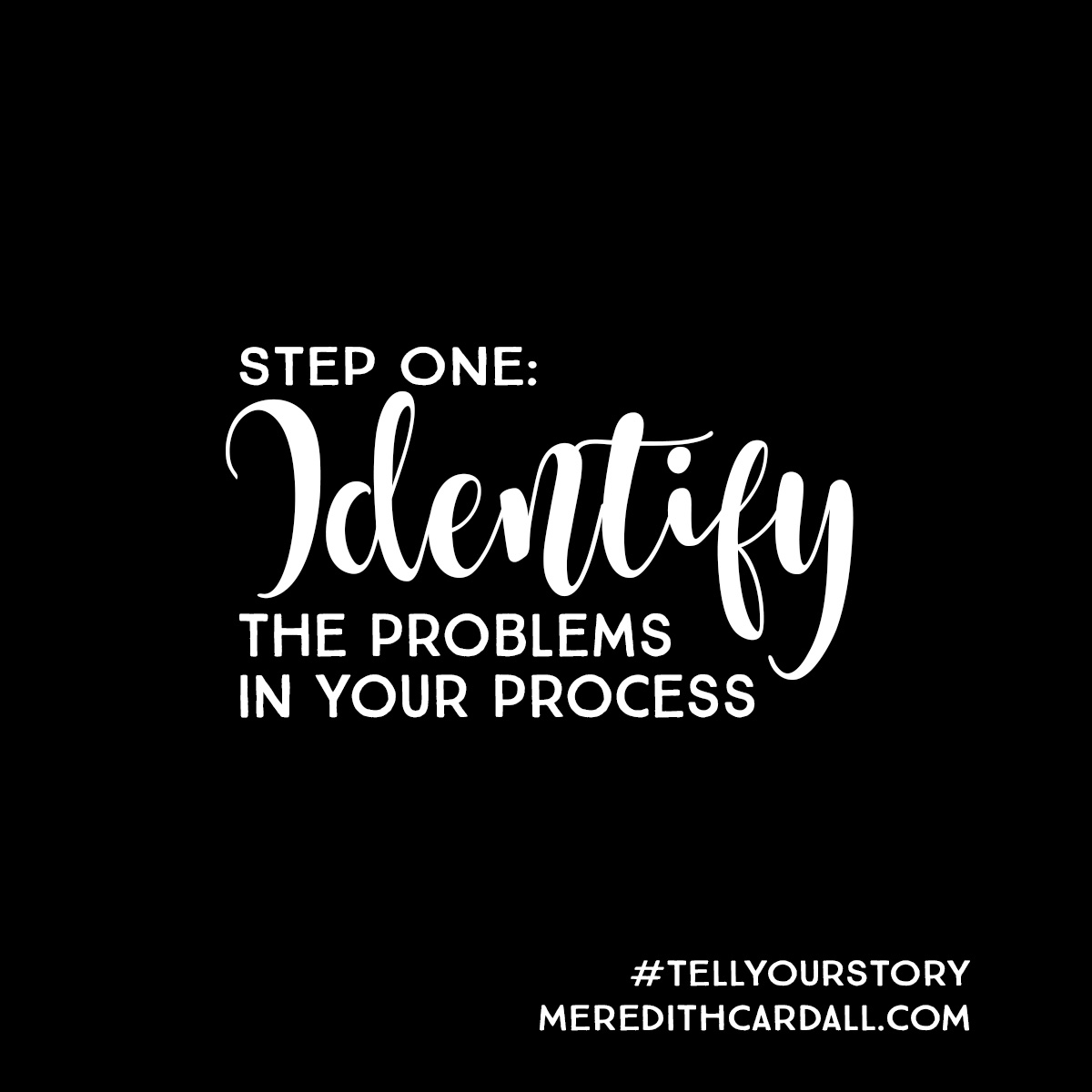This post was originally written in May 2017
About a week ago, I talked about how I felt like I was failing at telling our family’s story. I was completely overwhelmed and quite honestly, I was avoiding the issues. I am happy to report that I am feeling much more positive than I was last week. And I have learned that I am not alone! A lot of people are having the same issues as me. I have done quite a bit of targeted research over the last week. It’s amazing how information can help you become empowered. I’m no longer avoiding my scrapbook and personal history writing issues, I’m tackling them and learning from my mistakes. Over the next few weeks, I will be sharing information I’ve learned with you. I hope that it helps you feel empowered to tell your life story, too!
Step 1: Identify the problem(s)
Well, that sounds like an obvious step, but it’s one that I hadn’t done yet. I complained about not having things done, but I had never written down all of the problems. I am a visual person and writing something down helps me process it better. If you’re like me, grab a piece of paper and start listing all the issues you are having with your memory keeping process. You could also do this in Evernote or really anywhere you can make a list. Your list may be very different than my own, and that’s okay! We are all on our own memory keeping journey, and everyone’s path will be a little bit different.
Problems:
- I have big holes of time that are not scrapbooked.
- There are big holes in the content of our story.
- We may have incomplete photo backups, local & online
- There are pieces of memorabilia and photos scattered throughout my house
- I have boxes of 35mm film that has not been digitized
- Not all of my images are tagged or organized
- No one in our house has their entire personal history written
Step 2: Research
Armed with my list of problems, I headed out in search of answers! I will share my research findings in future posts. I’m still learning, so adding to this section will be ongoing.
Step 3: Design a Plan of Attack
For each problem, list a couple of different possible solutions. I used post-it notes so I wouldn’t have to scribble things out. Plus, I really like the colors. I’ll share my post-in notes in future posts, too.
Step 4: Implement the Plan
Just do it. Come up with a plan and commit to it. Add entries to your calendar. Set goals. Make yourself accountable for your plan. Come up with a system to reward yourself for meeting your goals.
Step 5: Evaluate the Plan
In 1 month, take a step back and evaluate your plan. Are you happy with the progress you’ve made? Do you need to adjust any goals? Set a date with yourself and your memory keeping each month to evaluate where you are and if the plan is still working for you. If it’s not working, go back to Step 3 and see if any of your other possible solutions would work better for you. If those don’t seem like they would work for you, go back to Step 1. Is the original problem still a problem you care about or has something else become more important? While it’s important to set goals, remember that they aren’t written in stone. They can be updated, changed or even replaced with new and better goals. This is YOUR family’s personal history. You have to do what’s best for you.
Repeat this process as often as is necessary.
What’s on your problem list?

